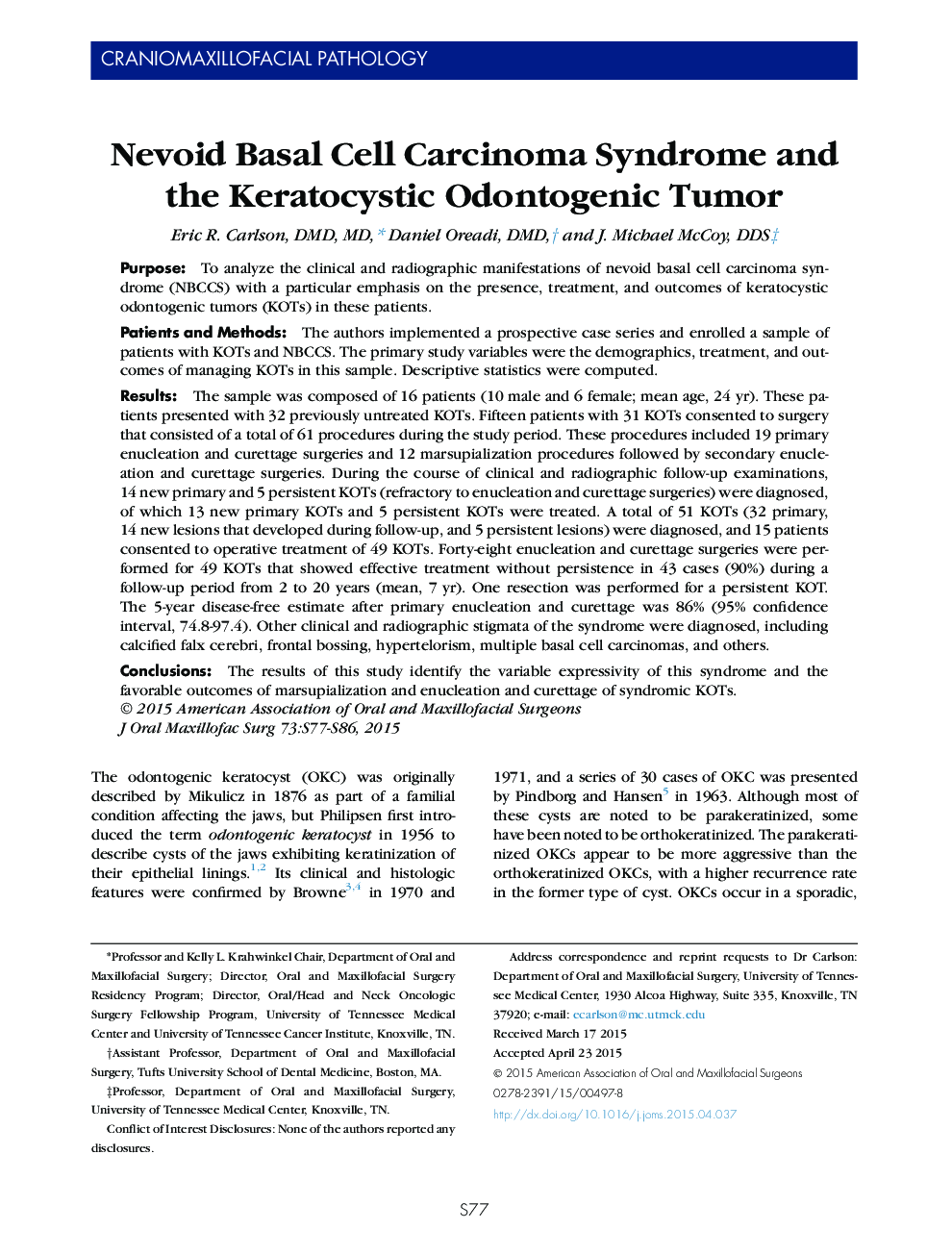| کد مقاله | کد نشریه | سال انتشار | مقاله انگلیسی | نسخه تمام متن |
|---|---|---|---|---|
| 3152121 | 1197998 | 2015 | 10 صفحه PDF | دانلود رایگان |

PurposeTo analyze the clinical and radiographic manifestations of nevoid basal cell carcinoma syndrome (NBCCS) with a particular emphasis on the presence, treatment, and outcomes of keratocystic odontogenic tumors (KOTs) in these patients.Patients and MethodsThe authors implemented a prospective case series and enrolled a sample of patients with KOTs and NBCCS. The primary study variables were the demographics, treatment, and outcomes of managing KOTs in this sample. Descriptive statistics were computed.ResultsThe sample was composed of 16 patients (10 male and 6 female; mean age, 24 yr). These patients presented with 32 previously untreated KOTs. Fifteen patients with 31 KOTs consented to surgery that consisted of a total of 61 procedures during the study period. These procedures included 19 primary enucleation and curettage surgeries and 12 marsupialization procedures followed by secondary enucleation and curettage surgeries. During the course of clinical and radiographic follow-up examinations, 14 new primary and 5 persistent KOTs (refractory to enucleation and curettage surgeries) were diagnosed, of which 13 new primary KOTs and 5 persistent KOTs were treated. A total of 51 KOTs (32 primary, 14 new lesions that developed during follow-up, and 5 persistent lesions) were diagnosed, and 15 patients consented to operative treatment of 49 KOTs. Forty-eight enucleation and curettage surgeries were performed for 49 KOTs that showed effective treatment without persistence in 43 cases (90%) during a follow-up period from 2 to 20 years (mean, 7 yr). One resection was performed for a persistent KOT. The 5-year disease-free estimate after primary enucleation and curettage was 86% (95% confidence interval, 74.8-97.4). Other clinical and radiographic stigmata of the syndrome were diagnosed, including calcified falx cerebri, frontal bossing, hypertelorism, multiple basal cell carcinomas, and others.ConclusionsThe results of this study identify the variable expressivity of this syndrome and the favorable outcomes of marsupialization and enucleation and curettage of syndromic KOTs.
Journal: Journal of Oral and Maxillofacial Surgery - Volume 73, Issue 12, Supplement, December 2015, Pages S77–S86